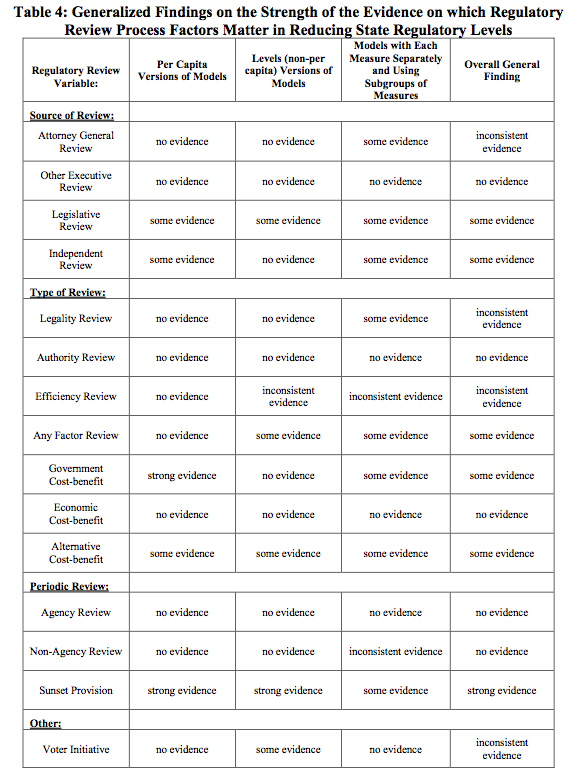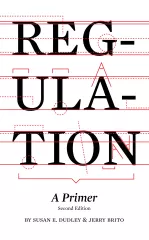- | Regulation Regulation
- | Working Papers Working Papers
- |
State Regulatory Review: A 50 State Analysis of Effectiveness
In this paper we have provided the first systematic empirical study of how differences in the regulatory review processes across all 50 U.S. states affect the level of regulation.
The standard economic rationale for regulation is that in some cases, the private profit and loss signals will not accurately reflect the true costs or benefits to society from the production of a particular good or service. Thus, even if regulations are passed with the best of social intentions and careful consideration, there will be mistakes. This creates a need for a regulatory review process to identify and remove regulations that have unintended consequences, do not live up to their stated goals, or do accomplish their desired goals but in such a costly way that it does not justify the benefit.
Many U.S. states have attempted to enact regulatory reforms to reduce the number of inefficient regulations that create costs exceeding benefits, and therefore decrease economic prosperity. In some states, the regulatory review process is viewed as so onerous that moratoriums on new regulations have been adopted. While previous literature has examined how the level of regulation impacts economic activity, none has systematically attempted to explain the level of regulation as the dependent variable. The few studies that have attempted to study the impact of regulatory reform or review have been case studies limited to specific states and some provide anecdotal evidence at best. There is no clear evidence about whether these rules help to curtail the amount of total regulation or to eliminate inefficient rules.
In this paper we have provided the first systematic empirical study of how differences in the regulatory review processes across all 50 U.S. states affect the level of regulation. To the best of our knowledge, such analyses have never been undertaken by any other study. While other studies have attempted to see how the total level of regulation in a state impacts state economic activity, we turn this question on its head by asking what factors determine the level of regulation in a state. That is, why do some states have more regulations than others, and do the procedural rules have a significant impact on the overall level of regulation in a state?

Overall our results have clear implications for policies targeting regulatory reform. The findings suggest that several procedural safeguards lead to a reduction in both regulatory creation and enforcement. The single most important policy in a state is the presence of a sunset provision. Requiring new regulations to be studied for their impact on government expenditures and revenues (government cost-benefit analysis) and requiring the presentation of alternative, lower-cost policies to achieve the same regulatory goals may also improve state regulatory systems. Finally, the review process should be housed in either the legislature or an independent agency to be most effective.


